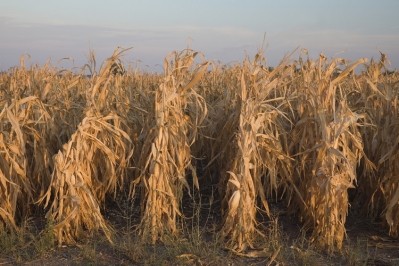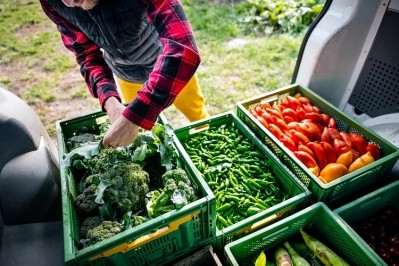EU consumers not eating enough fruits and vegetables according to WHO

Fruits and vegetables are widely recognised as an essential part of a healthy, balanced diet. They're packed with nutrients and fibre and, according to Britain's National Health Service (NHS), "can help to reduce the risk of heart disease, stroke and some types of cancer." Furthermore, the WHO warns that, "reduced fruit and vegetable consumption is linked to poor health."
It may then be cause for concern that a recent report from the European Fresh Produce Association, Freshfel Europe, has found that consumers in the majority of EU nations are failing to meet the World Health Organization’s (WHO) minimum recommended daily intake of fresh fruits and vegetables. In fact, figures show that just six of the 27 EU member states are meeting the minimum recommended intake of 400 grams of fresh fruits and vegetables, per person, per day, with the current average sitting at just 350 grams.
Why are Europeans eating fewer fruits and vegetables?
There are a multitude of reasons as to why consumers are eating less fruits and vegetables. The first of these being cost.
According to the National Library of Medicine, “Food prices have escalated due to impacts of the COVID-19 pandemic on global food systems, and other regional shocks and stressors including climate change and war.”
Food waste is also a major contributing factor towards the increased cost of fresh produce.
“Food waste throughout the supply chain – where food that’s ready for sale and consumption doesn’t get used – also contributes to higher costs,” Edwin Wentink, vice president of business development, Europe for food supply chain solutions company, Lineage, told FoodNavigator. “Food waste leads to economic losses and higher prices for consumers. It's estimated that up to one billion tonnes of food goes to waste each year globally.”
This further exacerbates the divide between lower and higher-income households as higher-income households will likely be able to absorb the increased cost of fresh produce, while lower-income households will not.
According to the National Library of Medicine, “low income is associated with a poor-quality dietary intake. Compared to those with higher income, lower-income individuals consume fewer fruits and vegetables, more sugar-sweetened beverages and have lower overall diet quality.”

Another major factor contributing towards the low consumption of fresh produce is the high availability of so-called convenience foods. While consumption of fresh produce is dropping, the consumption of convenience foods, such as ready meals and pre-prepared sandwiches, continues to increase.
According to business intelligence firm, Stellar Market Research, the convenience food market was valued at 574.87 billion USD in 2023 and is expected to reach 860.98 billion USD by 2030.
Though clearly convenient, and sometimes more affordable, convenience foods are often higher in fat, sugar and salt, making them significantly less healthy for the consumer.
“In times of economic uncertainties, consumers tend to move towards a less healthy diet, which is perceived to be more energy satisfactory and a cheaper food option than fruit and vegetables,” says Philippe Binard, general delegate of Freshfel Europe.

What are the benefits of eating fresh produce?
There are multiple benefits to consuming fresh fruits and vegetables on a regular basis. They’re a great source of vitamins and minerals, including folate, vitamin C and potassium. They're also a great source of dietary fibre, which can help to support gut health.
Furthermore, the European Food Information Council states that, “fruits and vegetables are an essential part of a healthy diet.”
What can the food industry do to increase the consumption of fresh produce?
The first and most obvious answer to this would be for the food industry to make fruits and vegetables more affordable. However, it’s not that easy, as farmers are facing huge challenges with regards to supply and energy costs. This is pushing prices up for manufacturers and retailers, who are in turn forced to pass the cost onto consumers. It’s therefore essential that we create more resilient supply chains to protect future food security and help to reduce the cost of these essential foods.
There are also numerous government schemes being trialled, around the world, with the aim of encouraging consumers to eat more healthy foods. One of these trials being a tax on foods high in fat, sugar and salt (HFSS), in some cases, coinciding with subsidies for healthier foods. These have proven to be successful when implemented correctly.
An alternative way for consumers to eat more fruits and vegetables would be to move towards the consumption of more frozen fruits and vegetables.
“We believe that a way to help consumers pick healthy food choices, especially when prices are higher, is to advocate for frozen,” says Lineage’s Wentink. “When people are required to be more stringent with their food purchases, they tend to look at foods that have a longer life span. Frozen delivers on this and is a much cheaper option. Furthermore, while frozen food is usually thought to be lower in quality and less nutritious than fresh, this is not the case.”





















